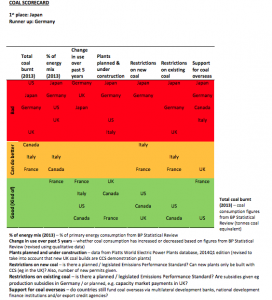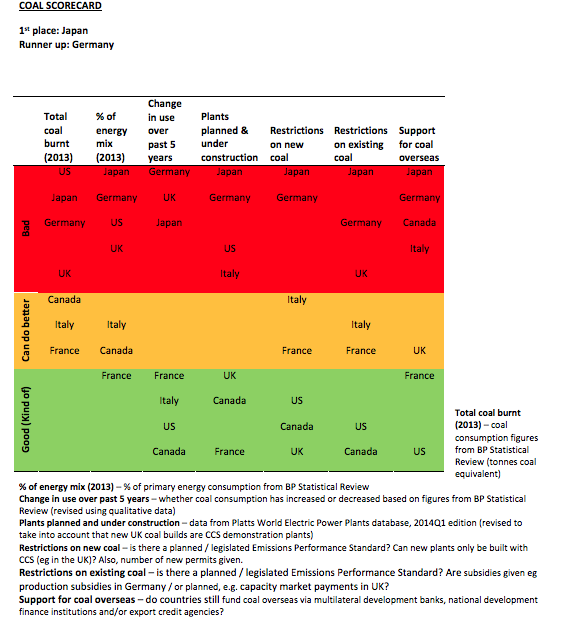ECO likes to think of itself as an environmentalist with a spreadsheet. The practical kind that identifies what the biggest obstacle is standing between us and a 2 or better a 1.5 degree world, and tackles it head on. We did the sums and ran the mode, and here’s what should be top of your lists for pre-2020 action and a central part of your INDC.
And it was President Calderon himself who reminded Ministers today that we urgently need to stop burning coal. That’s the recommendation that jumps out of his New Climate Economy Report, the hefty volume found on the tables of Finance Ministers around the world. And its conclusion: rich countries need to stop building new coal-fired power stations immediately and accelerate the retirement of their old ones; whilst middle-income countries need to call a halt to new coal in 2025. And of course, coal phase-out needs to go hand in hand with a fair, managed transition for workers to a 100% renewable future.
To get the conversation going, ECO’s scorecard ranks G7 countries (Canada, France, Germany, Italy, Japan, UK and US) on how they are doing in the move away from coal. We looked at eight different indicators, including how much coal each country burns overall; their coal dependency; whether coal power plant capacity is being added or closed down; how much taxpayer money is being spent on coal at home and abroad; and how stringently a country’s coal-specific regulation is.
Note that we did not look at coal production, focusing instead on where coal is being burnt. But we will come back to mining another time. As big fans of transparency, we have used a range of published data sources which we will be happy to provide, and which will make available in electronic form shortly.
So who is the G7 King Coal? It’s Japan – the worst performer on four of these categories. They were closely followed by Germany as the coal runner-up. This will not be surprising to regular readers of ECO, who know that Germany’s excess coal capacity is dragging the country down from reaching its climate goals. However, unlike Japan, Germany is starting to move in the right direction. It has just tabled a new plan which would put a cap on its coal consumption and close the equivalent of 8 coal fired power plants, saving 22 MtCO2e. Japan, on the contrary, plans to build more coal capacity in the near future!
Special booby prizes are given to the UK for preparing to spend generous amounts of taxpayer money to keep struggling coal plants open. Seems they have got their coal phase-out plan back-to-front. And to Japan (again), whose Bank for International Cooperation is the world’s largest public financier of coal-fired power plants. In contrast, the US policies of no funding to coal overseas are an example to follow. As is Canada’s Emissions Performance Standard for new and existing power plants (countries with weak carbon prices take note – there is another way)! Canada rarely gets praise when it comes to climate and energy, so this will come as a pleasant surprise to their Government. See how good it feels? (Erm, now about those tar sands . . .)
Finally, although not a member of the G7, Denmark deserves the last word, as they are discussing a plan to phase-out coal by 2025 – a green, clean future with healthy, sustainable jobs awaits. G7 – it’s over to you.
![]()

